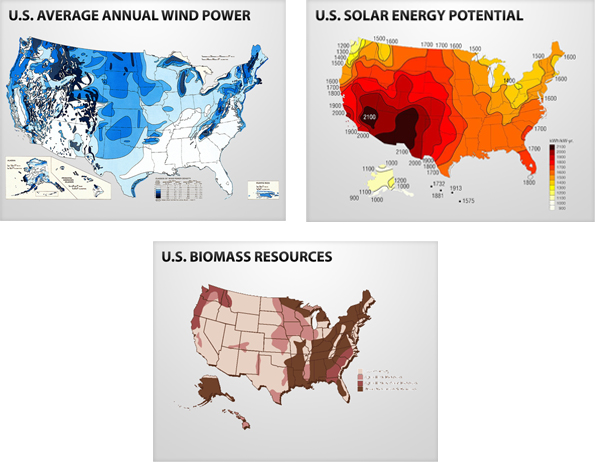Key Talking Points
Transitioning to a clean energy economy is vital to creating jobs and increasing our national security. The Waxman-Markey bill will help stop the flow of U.S. gas dollars to the Middle East, and invest in a diverse, comprehensive American energy portfolio.
Analyses from the EPA, EIA and others of the Waxman-Markey plan show that America will diversify our energy economy, move forward on long-stalled projects such as solar, wind, nuclear and carbon capture and sequestration, and create opportunities for new small businesses to break into the clean energy marketplace.
Renewable Energy

When the 20 percent by 2020 Renewable Electricity Standard in the Waxman-Markey bill is combined with the clean energy commitments from the American Recovery and Reinvestment Act, along with forward-thinking state clean energy programs, the increases in American clean energy generation are huge:
- Solar energy will increase 20-fold.
- Wind energy will increase more than 500 percent. DOE projects that by 2020 the US could have 150,000 megawatts of wind.
- Biomass will increase by more than 350 percent.
- Geothermal will increase by 50 percent or more.
Nuclear Power

Placing a market cap on carbon pollution creates a competitive advantage for carbon-free nuclear energy. According to EPA modeling of the draft Waxman-Markey plan, twice as many new nuclear plants would be built by 2025 under Waxman-Markey than without the legislation. The legislation also assists with the financing of nuclear power by establishing a Clean Energy Deployment Administration and reforming the existing Department of Energy loan guarantee program.
Coal and Carbon Capture Technology

By putting a price on carbon and investing in carbon capture and sequestration (CCS) technologies, coal plants will start to employ CCS by 2020, according to the EPA analysis of Waxman-Markey. CCS technology is not only critical for the future of domestic coal - but also for building a bridge to China and India in the fight against global pollution.
Hydropower

Hydropower is already the largest source of renewable power and will continue to play a role in our nation's energy portfolio. American Rivers and other environmental groups worked closely with the National Hydropower Association to craft a definition of qualifying hydropower that would be eligible under the Renewable Electricity Standard (RES), giving credit to efficiency improvements and hydropower added to existing dams in an environmentally responsible manner. Better utilization of these existing dams has the potential to meet the power needs of nearly 8 million households.
Energy Efficiency

Waxman-Markey will update standards for our nation's appliances, buildings, factories and power plants, saving families and businesses energy and money while cutting emissions. Waxman-Markey will update standards for our nation's appliances and buildings, and encourage greater efficiency at factories and power plants, saving families and businesses energy and money while cutting emissions. An independent analysis of the bill says that the energy efficiency provisions alone will save consumers over $4,000 by 2030 and reduce our oil consumption by 1.4 million barrels per day.
Natural Gas

Natural gas produces half the carbon dioxide emissions of coal, and in recent years new natural gas reserves have been discovered in the Eastern United States. The Waxman-Markey legislation encourages the use of this domestic resource to meet our energy needs, and provides assistance to consumers who rely on natural gas for home heating.
